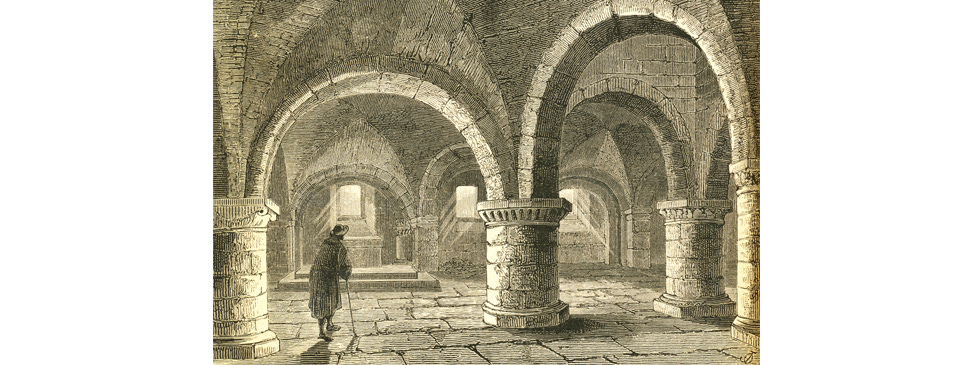The Coronation of William the Conqueror: A Day of Majesty, Chaos and Long Lasting Implications in Westminster Abbey, 1066

On Christmas Day 1066, a momentous event unfolded within the hallowed walls of Westminster Abbey: the coronation of William the Conqueror, the Duke of Normandy, as King of England.
This was not just a change of rulers, it was a seismic shift that would forever alter the course of English history.
The Setting: Westminster Abbey
Westminster Abbey, founded by Edward the Confessor, was still relatively new at the time and not the grand structure we know today. It was a Romanesque building, smaller and simpler than what is there now, yet it held a sacred aura.
The air was likely thick with the scent of incense with flickering candlelight casting shadows on the stone walls, creating an ethereal atmosphere. The abbey was probably filled to capacity, buzzing with a mix of anticipation and tension.
The Main Players
William the Conqueror
The central figure was, of course, William himself. A formidable warrior who grew up constantly battling to control his legacy and survive threats against his life. He was also a shrewd politician, who had successfully invaded England and defeated King Harold at the Battle of Hastings that October. His coronation was a major step in legitimizing his rule.
Bishops
The Archbishop of York, Ealdred, was tasked with performing the coronation ceremony. His role was crucial in lending ecclesiastical legitimacy to William's reign. Geoffrey de Mowbray, Bishop of Coutances, was likely a witness and possibly co-celebrant. Bishop Odo, William’s brother, may also have been involved in some capacity.
English Nobility and Clergy
The English nobility who had decided to outwardly support William after the defeat of King Harold, as well as other senior clergy were all likely to be present, though some perhaps reluctantly. Attendance was an acknowledgment of William's rule, but loyalty was far from guaranteed.
Norman Nobles
William's Norman nobles, many of whom had fought with him at Hastings were also likely in attendance, eager to see their leader officially take the throne and perhaps also keen to know what lands and titles that might come their way as a result of the conquest of England.
The Ceremony
The coronation ceremony was most likely a blend of Christian rituals and political theater. William was likely anointed with holy oils, signifying divine approval, and bestowed with royal regalia. Latin chants would have filled the air, sung by the abbey choir, as the Archbishop led the liturgy. The choir most likely sang Gregorian chants favored by the English church at the time. All would have been standing for the entire ceremony, and a wooden screen most likely separated the main players from the rest of those attending.
The Oath and The Uproar
One of the most significant moments was when Archbishop Ealdred asked the congregation in Latin and then in English if they accepted William as their king. This was met with a loud "Aye" from the Normans and a more subdued response from the English with other languages also likely to have shouts of assent thrown in. Unfortunately, the Norman guards outside mistook the noise for a riot and set fire to some of the buildings surrounding the abbey. Chaos ensued. Flames may even have spread to the Abbey, sending the congregation into panic, rushing to the doors to make their escape. The coronation ceremony was completed with great difficulty, most likely leaving the Conqueror seriously concerned over the evil effects of this unfortunate event.
Rituals and Symbolism
The rituals performed were steeped in symbolism and likely followed a similar set of rituals to the coronation of King Charles III on 6th May, 2023. Asking for the congregation's approval was a nod to the English tradition of a contract between the king and his people, albeit one now forced upon them.
While the actual details may have varied, the following rituals traditionally part of a British coronation ceremony are likely to have been followed:
1. The Procession
The ceremony often begins with a grand procession where the monarch-to-be is escorted to Westminster Abbey.
2. The Oath
The monarch takes an oath to uphold the laws and govern according to tradition.
3. Anointing
The monarch is anointed with holy oil by the Archbishop. This is considered one of the most sacred parts of the ceremony. The anointing of the king was seen as a divine sanction.
4. Crowning
The Archbishop places a crown on the monarch's head, signifying their official coronation.
5. The Sceptre and Orb
The monarch is handed the royal sceptre, symbolizing temporal power, and the orb, representing the Christian world. The bestowal of the royal regalia symbolized the earthly authority that came with the crown.
6. Enthronement
The monarch is seated on the throne, and the peers of the realm pay homage by touching the crown and kissing the monarch's cheek or hand.
7. Holy Communion
The ceremony usually concludes with a service of Holy Communion.
The coronation of William the Conqueror was a complex tapestry of power dynamics, religious rituals, and cultural clashes. It was both a beginning and an end: the start of Norman rule in England and the end of the Anglo-Saxon era.
The event at Westminster Abbey that day was not just a ceremony but a microcosm of the changes that were to sweep over England in the years to come. Changes that resonate to this day.
According to the writer Kevin Cahill, in Britain 0.3% of the British population owns 66% of the country, and these families who own two thirds of Great Britain largely descend from the army of William the Conqueror, the first Norman King of England who first conquered the country in 1066 and was crowned on Christmas day in that year.
To find out more and about how all this relates to a series of novels I am writing, subscribe to this newsletter. There is a free option.




